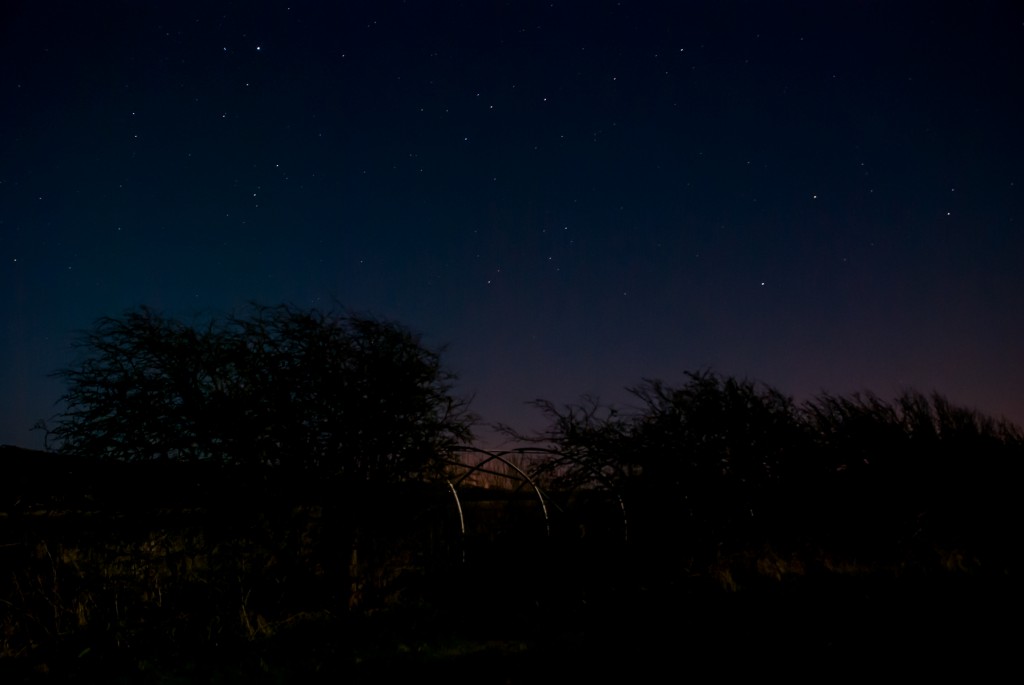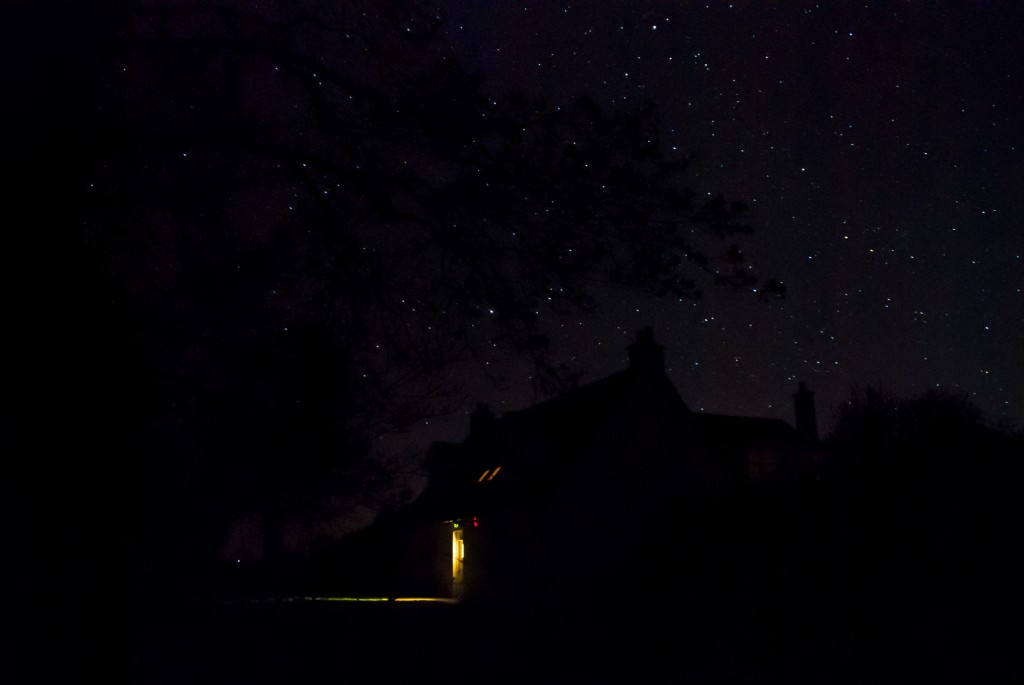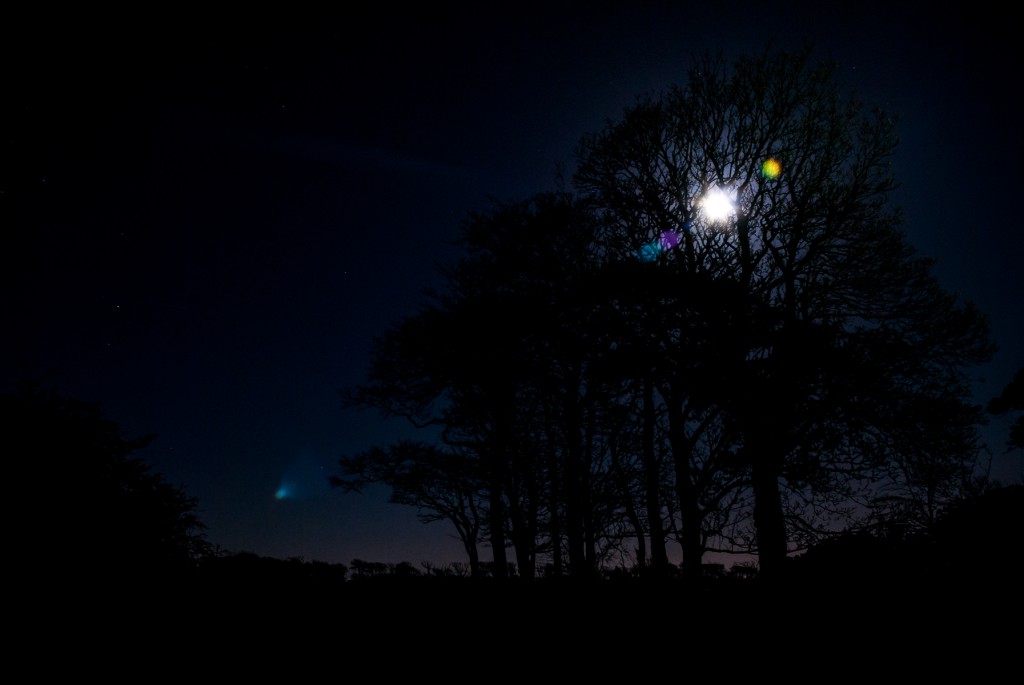“Ae dreary, windy, winter night,
The stars shot down wi’ sklentin light,
Wi’ you, mysel’ I gat a fright.”
– Robert Burns, Address to the Deil (1785)
The first Saturday after I arrived at Mersehead, I made the short journey sixteen miles north to Dumfries: the town probably best known as the final resting place of Robert Burns. I though had not come to visit the Burns Mausoleum, nor the small sandstone house in which he lived out the final years of his life. I had come to visit the town’s camera obscura.
The fundamentals of the camera obscura, literally ‘darkened chamber’, have been known to man for centuries, as demonstrated in the writings of Aristotle, but it was 1827 before Joseph Niécphore Niépce became the first man to fix the images produced by the camera obscura in what is now recognised as the first photograph. A device remarkable in its simplicity, the camera obscura is the foundation on which the entire practice of photography has been built.
Housed in the top of a former windmill overlooking the town, Dumfries’ camera obscura was installed in 1836 by the local astronomical society, making it, according to the museum, the oldest functioning camera obscura of its type in the world. Light enters into the room through a small opening in the ceiling and is directed by a lens onto white circular table in the centre of the room, upon which a moving colour image of the streets outside appears. The image is remarkably clear, its view shifted by rotating the lens and brought into focus by raising or lowering the table. The museum guide tells me that even in a world filled with high-definition digital screens, the camera obscura continues to fascinate children and adults alike.
Standing there, I am reminded of a story about another camera obscura, one given to the town of Kirriemuir by Peter Pan author James Matthew Barrie. According to my guide, there is a good, if unproven, chance Barrie visited the Dumfries camera obscura as a teenager, while he was a pupil at the local academy. What can be stated, with certainty, is that much later in his life, Barrie gifted a camera obscura to the town of his birth, with the desire that it should allow the local children to ‘experience magic’. Even in full knowledge of the scientific principles of the camera obscura, I can understand what he meant.
The word ‘photography’ means to ‘draw with light’, to capture an image like that produced by the camera obscura, so it is no exaggeration when I say that light is essential to my practice as an artist. It is not only light, however, that has been on my mind these past few weeks I’ve been at Mersehead, but that other essential element of the camera obscura: darkness.
On my first night at Mersehead, nearly a month ago now, I sat with The Roost’s two other residents and watched a small bat flap along the hedgerow in the twilight, while above us the first stars were beginning to appear in the sky. As night deepened, more and more stars continued to emerged until found myself gazing into a night sky that has become all too rare a sight. In Peter Pan, the directions to the island of Neverland are given as ‘second star to the right and straight on ‘til morning’, but, flying out from London today, Wendy and her brothers might struggle to follow these simple directions, for the skies above the capital – indeed above all our cities – appear to the human eye largely devoid of stars. Light pollution has banished all but the very brightest stars from our skies, pushing would-be stargazers further and further out into the country.
In Glasgow the street outside my flat is lit every night by a series of glowing streetlights and I am used to their light sneaking in through my curtains and casting their orange glow over my living room. In the city centre, shop signs and windows are kept lit long after even the most ardent shopaholic has retired to bed, while flashing LEDs declare the chip shop to be open for business. Night in the city is constant, regulated; the movement of the Earth and its lone natural satellite play no part in its illumination. Here at Mersehead, however, the story is quite different.
The first night I stood outside The Roost with my camera trained on the stars, the darkness around me felt oppressive, forbidding. Every sound rang much louder: the squawk of a rook, the creak of a gate; and every shadow seemed to contain some hidden menace. Every distant light, from the red lights of the Robin Rigg wind turbines a short distance out in the Solway Firth, to cars on the road more than a mile from the reserve seemed no more than a field away. Unnerved, I found myself reluctant to venture too far beyond the small pool of light outside the front door, and its perceived safety. Though I did not realise it at the time this was the night of the new moon. On a night like this, the darkest of nights, the stars in the sky are so dense that I have to search even for that most recognisable of the constellations, The Plough.
At night, work on Mersehead does not stop simply because the sun has gone down, for the reserve is home to many nocturnal creatures, most notably the natterjack toad. One night, during my second week here, we ventured down over the field and into the merse to look for these remarkable amphibians, whose song can often be heard ringing across the reserve. I had expected to find the fields shrouded in darkness, to be wholly reliant on a torch to light our way, but instead I found the landscape illuminated by silvery moonlight. We made our way across the fields with naked eyes, only turning to torchlight when we reached the edge of the natterjacks’ shallow pools. On this night, the moon was only in its first quarter.
By the time the full moon arrived a week later, a strange inversion had occurred. Standing outside the Sulwath Centre – on the track running from the end of Rainbow Lane down beyond the woodland – I could see clearly in every direction, enough light even for me to read the dials on my camera without a torch. In this light, the reserve’s automated outside lights, which on darker nights I had associated with a feeling of safety and security, became a source of trepidation. Whenever they were triggered I stood rooted to the spot, muscles tense, while my eyes, partially blinded by the sudden onslaught of light, searched for the source of the disturbance.
Though I have long been aware of the absence of stars from the skies above the city, I cannot say I have ever before been so aware of the absence of moonlight. I have stood more than once on Waterloo Bridge in the very heart of London and watched the moon pass behind the splintered tower of The Shard, but, though it seems obvious now, it never occurred to me its silvered light could not penetrate the haze of sodium, neon, and other assorted lights of the city.
Just as we need darkness to see the image produced by the camera obscura, it is only in darkness that the reflected light of the moon, and the ancient light of the stars, can shine clearly. Darkness like this is a part of nature our ancestors knew well, but in the relatively recent past has become for many of us a rarity. Though some cities have begun to take steps to reduce light pollution, for the time being, one must come to places like Mersehead in order to find this darkness, even if it sometimes frightens us.
This post was originally published on 7th May 2016 as part of my SGSAH-funded residency at RSPB Mersehead. Original URL: http://www.rspb.org.uk/community/placestovisit/mersehead/b/mersehead-blog/archive/2016/05/07/camera-obscura.aspx.



2 thoughts on “Camera Obscura”